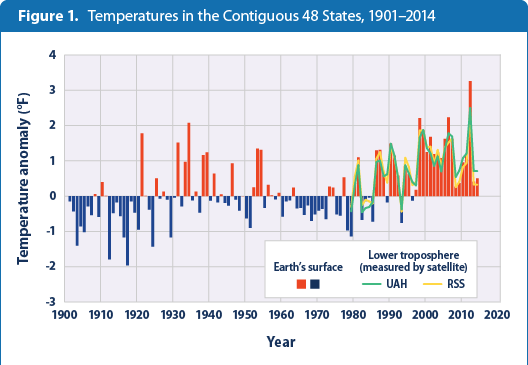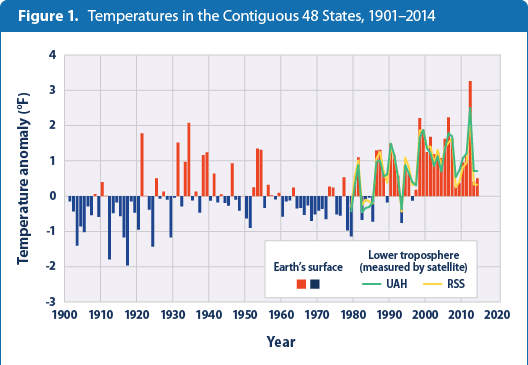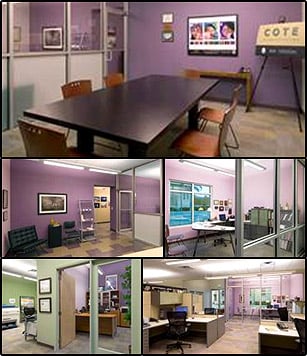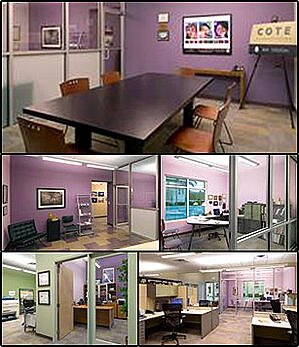Why the 21st conference of parties is so important for Sustainability
The 21st Conference of Parties (COP 21) has begun in Paris, and will continue through December 11th.
The governments of nearly 200 countries are gathering to discuss a new global agreement on climate change, with participation from an estimated 40,000 attendees. More than half of the countries there will be represented by their heads of State, and 170 countries have already submitted their plans.
In other words, this is a really big deal!

The path to climate destruction:
Scientists have warned us for decades that if greenhouse gas emissions continued to rise, we would pass the threshold beyond the point in which global warming became catastrophic and irreversible.
That threshold is estimated to be a temperature rise of 2C above pre-industrial levels, and based on current emissions trajectories we are barelling toward a rise of about 5C (which equates to approximately 9 degrees Fahrenheit).
Some nations are already feeling the impacts of climate change even now, at the current level of almost 1°C warming. Conflicts exacerbated by extreme weather are on the rise, and some are seeking official climate refugee status based on weather-related events occurring in their homeland.
One of the COP's core initiatives is to support vulnerable countries and communities in adapting to the impacts of climate change that are happening right now as well as looking into the future.
To help you understand the significance of the event, I'm going to highlight a few critical moments in history.
1992
Governments met in Rio de Janeiro and forged the United Nations Framework Convention on Climate Change. That agreement, still in force, bound governments to take action to avoid dangerous climate change, but did not specify what actions were required.
1995
The first UN Climate Change Conference (COP1) was held in Berlin.
1997
Kyoto protocol (COP3). The pact required worldwide cuts in emissions of approximately 5%, compared with 1990 levels by 2012, and each developed country was allotted a target on emissions reductions. Unfortunately, developing countries, including China, South Korea, Mexico and other rapidly emerging economies, were given no targets and allowed to increase their emissions at will. Al Gore, then US vice-president, signed up to the protocol, but it was never ratified by the US Congress.
2009
Copenhagen (COP15)- The conference did not achieve a binding agreement for long-term action. It only produced broad stroke agreements that fell far short of intended goals.
what others are saying
I found that Ricken Patel’s article, "The Paris climate summit is a real test of humanity," summed it up quite well. Mr. Patel states, “Climate change is in many ways a crucible. It is the greatest threat we have ever faced, and will require us to come together as never before, in the most ambitious solution we’ve ever attempted.
The solution is clear, and it's the only answer we have: to transform our economies to be powered by 100% clean energy.
But will we be wise enough, skilled enough, brave enough, to answer the call of our people, of our children and their children? For 20 years we have talked in these climate conferences. Progress has been glacial.
The largest corporations in the world are almost all oil companies. The top four have the same budget as the government of China. The top 10 have the same budget as the US government. They are states, superpowers unto themselves. And to save our species from the threat of catastrophic climate change, they must radically change, or die. So far, most of them have chosen to fight for shortsighted profit, and our demise.”
How we're celebrating:
Here at Carlson Studio Architecture, we are celebrating this important international event that supports sustainability with an open house and holiday party at our office on December 3rd, 2015. This date also happens to be the day in the conference that will focus on Buildings, so we will be paying especially close attention.
We share a vision with each other and our clients, as we want to make a difference in the world we live in. Being conscious of and combating climate change is the number one reason why we do what we do, and we pledge our support to the COP 21 in hopes that this is a landmark year that spurs important decision-makers to take meaningful action.
Interested in learning more about why green building design is so important? Check out this free ebook on Green Home Design:



 The firm purchased the 4,400-square-foot parcel with a partner and sub-divided the space. Carlson Studio Architecture shares their 2,400-square-foot area with Carlson Studio Marketing, a green PR & marketing agency, run by Grace Carlson. The businesses consciously made the decision to seek USGBC LEED Silver Commercial Interior (CI) certification for the project, which was achieved in December 2007. The reason was two-fold. Because the business owners believed in the value of LEED certification, they wanted their building to serve as a demonstration model to current and potential green building clients. They also recognized the investment in third-party certification would increase the value of their asset.
The firm purchased the 4,400-square-foot parcel with a partner and sub-divided the space. Carlson Studio Architecture shares their 2,400-square-foot area with Carlson Studio Marketing, a green PR & marketing agency, run by Grace Carlson. The businesses consciously made the decision to seek USGBC LEED Silver Commercial Interior (CI) certification for the project, which was achieved in December 2007. The reason was two-fold. Because the business owners believed in the value of LEED certification, they wanted their building to serve as a demonstration model to current and potential green building clients. They also recognized the investment in third-party certification would increase the value of their asset.